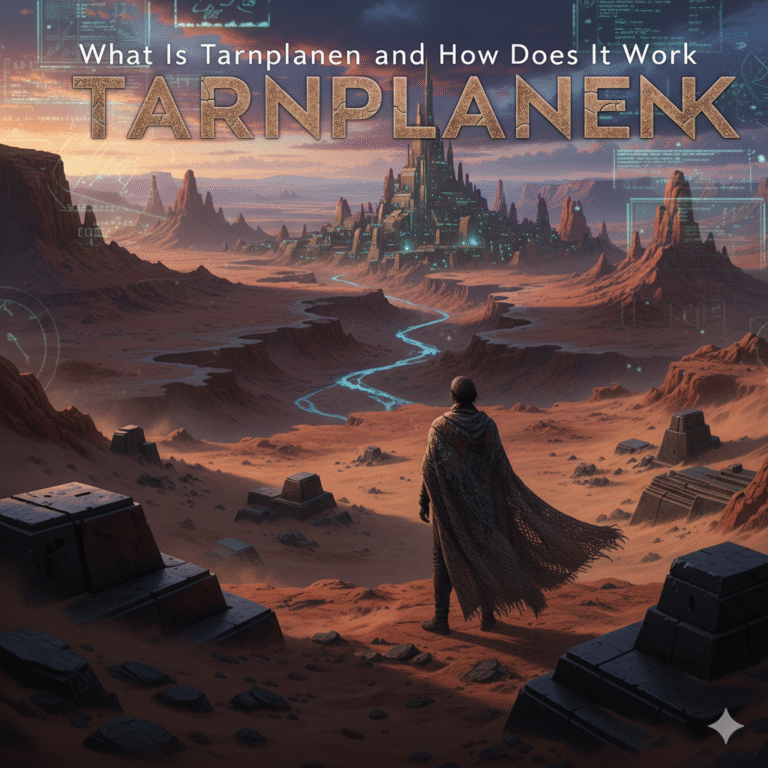Introduction to Monkeyfist
The term “Monkeyfist” predominantly refers to a type of knot, known for its unique structure and remarkable versatility. It is generally formed by tightly wrapping a cord around a mass, which can often be a ball or weight, resulting in a robust and sizeable knot. Originally, the Monkeyfist knot served practical purposes, particularly in maritime environments, where it was utilized as a weight for throwing lines or as a secure grip for grappling. Over time, the knot has evolved into various forms and adaptations across different disciplines.
In martial arts, the Monkeyfist is not only recognized for its practical applications but also celebrated for its symbolic significance. Practitioners often employ this knot as an integral part of training tools, such as weighted ropes or training weapons. The knot symbolizes strength and resilience, embodying the principles of discipline and endurance that are central to martial arts training.
The cultural significance of the Monkeyfist extends beyond its functional use in knot-tying and martial arts. The design itself has captivated enthusiasts in various contexts, including outdoor enthusiasts who appreciate its performance during climbing or other challenging activities. Additionally, the Monkeyfist has transcended its practical attributes to become a visual emblem in various forms of art and literature, reflecting its enduring influence in different cultures.
As we delve deeper into its origins and variations, it becomes essential to explore how the term “Monkeyfist” relates to different regions, including the potential connections to Norway. Understanding the historical and cultural threads that tie this knot to various practices will shed light on its intricate legacy and the possibility of a Norwegian link. This exploration allows for a richer appreciation of the Monkeyfist as a cultural and practical artifact.
The Historical Roots of the Term
The term “Monkeyfist” possesses a rich and somewhat obscure historical context that merits exploration. While it is commonly associated with a specific knot used in maritime and climbing practices, its linguistic origins delve deeper into cultural and historical nuances. The evolution of the name can be traced back to its practical application as a type of knot, primarily characterized by its spherical shape, designed to provide weight and improve throwing capabilities.
The very term arose in the 20th century, capturing the essence of its shape and function. Early references to this knot began appearing in seafaring texts and manuals, reflecting its utility among sailors and adventurers. The phrase likely draws from the playful comparisons of its form to that of a monkey’s fist, which further enhances its imagery. Over time, the term gained traction, and its usage spread across various disciplines, including climbing and outdoor activities. This evolution illustrates how practical terms can transform into colloquial expressions, often reflecting the distinctive characteristics they represent.
<pmoreover, "monkeyfist"="" 19th="" 20th="" a="" additional="" also="" among="" and="" appearing="" applications="" broader="" but="" centuries="" contemporary="" core="" cultural="" culture="" day-to-day="" despite="" discussions="" early="" encompass="" evolved="" facilitating="" for="" from="" functionality="" gear="" has="" highlight="" historical="" importance="" in="" including="" introduces="" its="" knot="" knot's="" knots="" late="" layers="" maritime="" not="" of="" often="" on="" only="" operations.="" p="" passage="" relied="" rescue="" resonance,="" retained="" roots.="" sailors,="" scenarios.<pby "monkeyfist,"="" across="" adaptation="" adoption="" analysis="" and="" are="" becomes="" context="" contexts.
Exploring Norwegian Culture and Language
Norwegian culture is characterized by a rich tapestry of history, traditions, and linguistic diversity. The country, known for its stunning fjords and deep-rooted maritime history, reflects a long-standing connection to the sea. This relationship has significantly influenced the language and customs of the Norwegian people. The Norwegian language is divided into several dialects, with two official written forms: Bokmål and Nynorsk. Both forms encapsulate local variations and expressions, hence providing a unique glimpse into the everyday lives of Norwegians.
Nautical terminology plays a crucial role in Norwegian culture, especially considering the country’s expansive coastline and dependence on fishing and shipping. Terms such as “skipper,” “båt” (boat), and “seil” (sail) are commonly used and showcase the intimate relationship Norwegians have with their maritime environment. The phrase “monkey fist,” which refers to a specific knot often used in sailing, may raise questions about its origins, especially when examined within the context of Norwegian seafaring traditions.
Moreover, Norwegians have a profound respect for nature and its elements, which is reflected in their folklore and traditions. This reverence extends to their maritime practices, where knowledge of knots, navigation, and boat maintenance is passed down through generations. Terms like “knop” (knot) are vital, not just as practical vocabulary but as part of the rich cultural fabric that defines Norway’s seafaring legacy.
In exploring the intricacies of Norwegian maritime language and culture, it becomes evident that there is a compelling narrative that binds the linguistic expressions with the nation’s identity. The examination of these elements may provide insights into possible connections to the term “Monkeyfist” and contribute to a deeper understanding of its significance in a historical context.
The Monkeyfist Knot: A Practical Overview
The Monkeyfist knot is a versatile and essential knot used primarily in maritime practices and climbing. Frequently employed by sailors, this knot serves numerous practical purposes, making it a valuable addition to any seafarer’s repertoire. Its construction typically involves twining a length of rope around a central weight, which traditionally can include a stone or a metal ball. This design not only provides it with physical heft but also enables it to be thrown easily, making it effective for creating a heaving line—a crucial tool for mooring and towing vessels.
Beyond its functionality in sailing, the Monkeyfist knot has applications in climbing as well. Climbing enthusiasts utilize this knot to create sturdy anchors or to secure climbing gear. Its unique structure allows for ease of gripping, and the added weight can assist in accurately landing the knot during various tasks, such as retrieving gear or executing rigging setups. Furthermore, the knot’s symmetrical and compact form contributes to its overall reliability in demanding environments, where knots must withstand tension and potential stress.
The historical significance of the Monkeyfist knot is intriguing when examining its ties to maritime tradition. While the exact origins of the knot are somewhat nebulous, its use in seafaring practices is well-documented across various cultures, including those in Norwegian maritime history. The knot’s practical applications may indicate that it was known to Norse seafarers, who relied heavily on efficiency and effectiveness in knot-tying for their long voyages. As such, delving into the Monkeyfist knot’s construction and uses reveals not only its practical worth in sailing and climbing but also hints at a broader tapestry of nautical history, intertwining cultures and their shared knowledge of essential knots.
Investigating Folklore and Mythology
Norwegian folklore and mythology are rich traditions filled with tales of various creatures, gods, and cultural symbols. While the term ‘Monkeyfist’ does not have a direct counterpart in traditional Norwegian lore, an exploration of related themes and symbols can provide insights into potential connections. Norwegian mythology prominently features an array of animals that carry significant meanings, sometimes representing wisdom, mischief, or transformation.
Specifically, the trickster figure known as Loki appears frequently in tales, embodying the dual natures of chaos and cleverness, akin to characteristics often associated with monkeys in various cultures. Loki’s stories often involve deception, shape-shifting, and clever manipulation—traits reminiscent of the intelligent and playful demeanor of primates. While not directly related to the term ‘Monkeyfist’, this connection to cunning and shape-shifting can evoke imagery closely associated with monkeys.
Furthermore, there are numerous tales of folkloric creatures such as the ‘Huldra’, who intertwine human and animal traits, presenting a fusion of the human experience with elements of the animal kingdom. The Huldra is known to possess a cow’s tail and is often portrayed as an enchantress, leading men into the woods. Such stories may highlight the magical and transformative qualities attributed to animals in Norwegian culture, however, they steer away from direct references to monkeys.
Additionally, there are Scandinavian tales focusing on animals like bears, wolves, and birds, which play pivotal roles across various narratives. These creatures, while not monkeys, often symbolize strength, freedom, and other human-like qualities, reinforcing the idea of animals embodying deeper meanings within folklore. By examining these narratives, a clearer understanding of the animal symbols prevalent in Norwegian lore emerges, even if a direct link to ‘Monkeyfist’ remains elusive.
Linguistic Theories and Similarities
The exploration of the name ‘Monkeyfist’ leads to intriguing inquiries into its phonetic characteristics, which bear resemblance to various languages, including Norwegian. Linguists often analyze names through their phonetic structures, suggesting that the unique combination of sounds in ‘Monkeyfist’ might have parallels in Scandinavian languages. The Norwegian language, known for its distinct sounds and syllabic structures, presents a potential framework for understanding the properties of this name.
One area of exploration involves pronunciation similarities. The initial syllable “monkey” could be examined for its phonetic attributes. In Norwegian, certain words begin with sounds similar to those in ‘monkey,’ such as “munk” (meaning monk). When considering the subsequent syllables, “fist” aligns phonetically with words like “fist” in Norwegian, although the primary linguistic meaning diverges. This divergence highlights the need for contextual analysis; while phonetic similarities exist, they do not necessarily translate to shared meanings or cultural significance.
In the realm of linguistic discourse, scholars frequently engage in discussions about how languages influence one another, particularly in regions with historical migration patterns. Some theories suggest that names can evolve through cultural contact, leading to variations that might echo their original forms. However, the absence of documented instances connecting Norwegian terms directly to ‘Monkeyfist’ makes substantive claims challenging. The community of linguists remains divided on the matter, with some advocating for a broader interpretation of potential influences while others dismiss the possibility due to insufficient evidence.
Overall, while phonetic resemblances and linguistic connections are fascinating avenues for exploration, further research is essential to substantiate any claims regarding a Norwegian influence on the term ‘Monkeyfist.’ This investigation illustrates the complex interplay of language, culture, and etymology, inviting continued dialogue and study in the field of linguistics.
Modern Usage and Popular References
The term ‘Monkeyfist’ has evolved considerably in modern times, permeating various aspects of popular culture including television, literature, and internet platforms. This expansion has raised questions about its origins and potential connections to Scandinavian or, more specifically, Norwegian influences. In contemporary usage, the term often refers not only to the traditional knot used in maritime practices but also to become a metaphor for tenacity, ingenuity, and creativity.
In the realm of television, ‘Monkeyfist’ is perhaps most recognized due to its association with the character of the same name in the animated series “Kim Possible.” This character, a martial arts expert with a penchant for chaos, embodies the playful and unpredictable nature that the term ‘Monkeyfist’ suggests. His adventures serve to popularize the term among younger audiences, though it does not seem to draw direct ties to Scandinavian heritage.
Literature, too, showcases references to ‘Monkeyfist’. Various authors have utilized the term in fantasy and adventure narratives to symbolize agility or clever problem-solving. The adaptability of the term across various contexts highlights its capacity to resonate with themes found in Norwegian folklore — such as the cleverness of characters or creatures overcoming larger challenges. However, there appears to be little explicit connection linking these uses directly to Norwegian cultural elements.
Furthermore, the internet culture has seen the term take on various meanings, from memes to slang, particularly in forums discussing tactical gear and survival skills. Despite its varied applications, there remains a noticeable absence of Norwegian influence in its modern context. Thus, while ‘Monkeyfist’ holds a prominent spot in contemporary language and culture, its ties to Norwegian customs or traditions seem tenuous at best.
Expert Opinions and Discussions
The inquiry into the possible Norwegian connection to the term “Monkeyfist” has intrigued scholars from various disciplines, particularly linguistics and cultural history. Experts have offered valuable insights regarding the etymology and cultural implications of this term. Dr. Anders Lunde, a linguist specializing in Scandinavian languages, emphasizes the rich tapestry of Norse mythology and seafaring traditions that contribute to the evolution of many maritime terminologies in English. According to Dr. Lunde, similarities between “Monkeyfist” and certain Norwegian words could stem from historical interactions between Norse sailors and local populations, often leading to the incorporation of terms across languages.
In addition, Dr. Ingrid Bjørnsen, a cultural historian, points out that many phrases used by sailors were often descriptive of the tools and techniques required in their profession. The design of a “Monkeyfist,” a type of knot used in various maritime activities, resonates with the nautical community, where language has always been dynamic and influenced by experiential practices rather than rigidly uniform. She suggests that while there may not be a direct translation or origin from Norwegian, the practical use of similar knots in Nordic fishing and sailing practices highlights a broader Scandinavian influence on maritime terminology.
Further complicating the discussion, Dr. Lars Halvorsen, an expert in the interplay of language and culture, notes that the globalization of terms creates challenges in tracing their origins. He argues that many maritime communities shared knowledge and vernacular, particularly in coastal areas where trade was prevalent. Thus, it is plausible that “Monkeyfist” could have multiple threads leading back to various cultural sources, including possible links to Norwegian practices. This interplay signifies a complex dialogue between cultures that, while sharing terminology, often possess distinct historical narratives.
Conclusion
In exploring the potential Norwegian connection to the name ‘Monkeyfist,’ we have examined various theories, cultural interpretations, and historical contexts surrounding this unique term. While some accounts suggest that the origin may lie in maritime traditions and practices prevalent among Norwegian seafarers, others counter with alternative explanations rooted in different cultures and languages.
The discussions surrounding the term highlight its multifaceted nature, with a notable emphasis on knot-tying techniques that may have been influenced by seafaring communities not exclusive to Norway. Notably, the term ‘Monkeyfist’ refers specifically to a type of knot used for weight at the end of a rope, often associated with nautical and climbing activities. This connection to knot tying may weave a broader narrative, involving various maritime cultures, including Norway. Yet, definitive evidence linking the name directly to Norwegian origins remains elusive.
Additionally, engaging with linguistic patterns offers another avenue of exploration. The etymology of ‘Monkeyfist’ invites scrutiny of its composite elements, suggesting influences from multiple languages and regions. In this context, it becomes apparent that while the Norwegian connection is plausible, it cannot be firmly established without substantial corroborative evidence.
As we conclude this examination of ‘Monkeyfist,’ it is clear that the name is enveloped in a tapestry of maritime lore and cultural significance. Whether or not a direct Norwegian connection exists, the fact remains that discussions surrounding ‘Monkeyfist’ can invite a wealth of perspectives and interpretations. We invite readers to contribute their insights and experiences regarding this intriguing topic, encouraging an ongoing dialogue that may shed further light on the name’s origins.



